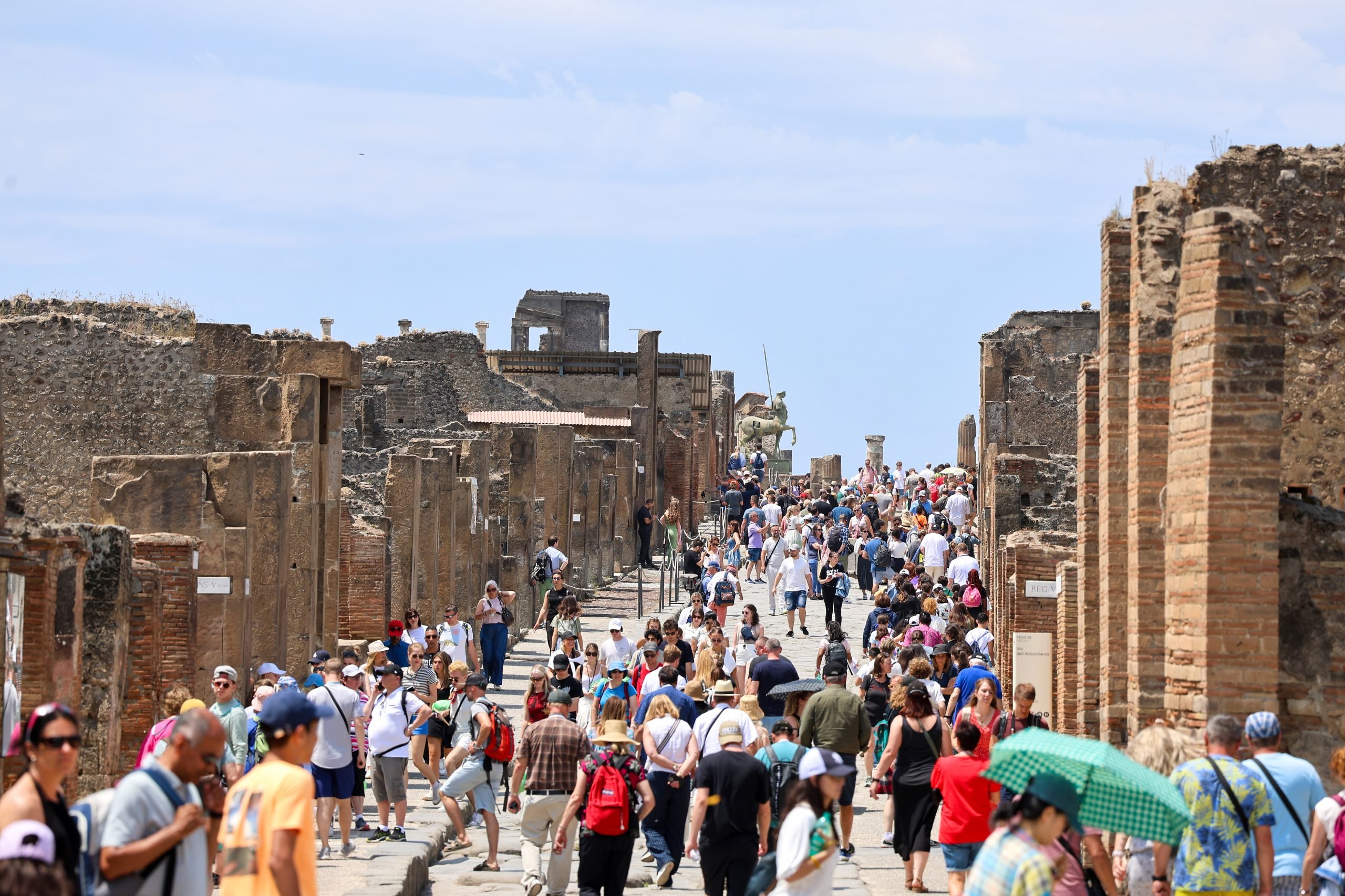
Pompeii Archaeological Park is one of the most popular ancient tourist sites in the world, though a new mandate may be seeking to curb the effects of this popularity on the historic location. New measures to protect the site from the effects of overtourism—including visitor vandalism— will see a limit of 20,000 daily visitors introduced from November 15.
The director of Pompeii Archaeological Park, archaeologist Gabriel Zuchtriegel has said: “We are working on a series of projects to mitigate anthropogenic pressure on the site, which can be a risk both for people, for example in the event of an earthquake, and for the heritage, which is so unique and fragile.”
The site welcomed a record-breaking four million tourists this summer alone, and up to 30,000 per day during the peak summer season. Records were broken this year when 36,000 visitors descended on Pompeii during one of the site’s Free Sundays—the first Sunday of the month when tickets to enter the site are free.
Tourists crowd the Archaeological Park of Pompeii. Photo by Antonio Balasco/KONTROLAB/LightRocket via Getty Images
Visitors to the ancient site during the peak season between April and October will need to choose between two time slots going forward. The first slot, between 9 a.m. and 12 p.m., will allow entry to a maximum of 15,000 ticket-holders, and the second, between 12 p.m. and 5:30 p.m., will allow in a further 5,000 visitors.
Pompeii, which was consumed by volcanic ash after Mount Vesuvius erupted in 79 AD, is an active archaeological dig site, with large areas of the ancient city being excavated and researched by archaeologists on the ground. Excavations have been underway at the site since the 18th century, and Pompeii was opened to the public in the late 19th century.
Overtourism is an issue being tussled with by major tourist hotspots across the country and across Europe more widely. This April, Venice became the first major city to charge an entrance fee. The €5 ($5.30) fee was charged on 29 peak days between April and July. The fee was not only designed as a deterrent to day trippers, but the money raised will also help to conserve the city which is in ever-present danger of flooding.
Tickets to the Archaeological Park will also need to be purchased with the visitor’s name specified to reduce the number of tickets sold by second parties. Original identification will need to be shown when tickets are purchased from official ticket offices. Many companies in Italy offer tickets for tourists to visit Pompeii that range in price, and some offering the chance to “skip the queue” at entry. There are various ticket types to enter the site, including “Pompeii Express” which includes an audioguide and “Pompeii +,” which includes entry to the Villa of the Mysteries, Villa of Diomedes, and Villa Regina.
Tourists crowded together cross the Bridge of Sighs (Ponte dei Sospiri) in Venice. Photo: Soeren Stache/dpa-Zentralbild/ZB (Photo by Soeren Stache/picture alliance via Getty Images)
It is not the only site that will become a little harder to visit. Restrictions are also being considered for Rome’s world-famous Trevi Fountain. The proposed changes, endorsed by the Roman mayor Roberto Gualtieri, could see a €2 ($2.20) entry fee charged for access to Nicola Salvi’s 1762 Baroque fountain and visitation limited to 30 minutes. The Trevi Fountain is renowned for its crowds, with over 1,000 people estimated to flock to the landmark every hour. Some left disappointed recently while the fountain was drained as part of a $330,000 restoration project.
Zuchtriegel has remarked how these new measures will allow the park to “expand the usable areas in the ancient city and to develop the other sites in the area, including Boscoreale, Torre Annunziata, Villa dei Misteri, Civita Giuliana and Stabia.” The Park is developing a free shuttle bus service to these nearby ancient sites as part of the Greater Pompeii projects.
“We are aiming for slow sustainable, pleasant, and non-mass tourism,” said Zuchtriegel. “Experience shows that only those who focus on quality grow in a sustainable way, and we are focusing on this while trying to help the territory and the professionals who are working in a [way] that has changed profoundly since the pandemic and will change again. These changes need to be managed in a shared and proactive way and not passively endured. In this start-up phase, we will closely observe the situation and continue the dialogue with all stakeholders to possibly adjust course.”